Sauerkraut - the BEST probiotic
February 2022
— Top 5 Favourite Home Remedies #2 —
By Dr. Danielle Caruk
The making of sauerkraut dates back over 2000 years. During the fermentation process bacteria and yeast feed on the natural sugars found in the cabbage creating conditions that promote the growth of beneficial probiotics. These digestive enzymes affect the biodiversity of your gut bacteria (the microbiome). A healthy adult human harbours approximately 100 trillion micro-organisms in the gut. There are ten times as many bacterial cells as there are regular cells in the body. We are a symbiosis of human and bacterial components and are genetically and functionally dependant on the balance of these organism for proper growth, development, health and homeostasis.
Traditional Chinese Medicine focuses heavily on diet and nutrition. We use herbs and specific foods, like sauerkraut, to balance the gastrointestinal tract, improve digestion, prevent the growth of harmful bacteria and boost the production of natural antibodies that keep your gut lining healthy. A strong gut lining helps prevent unwanted substances from "leaking" into your body and causing an immune response. Regularly consuming probiotic foods like sauerkraut which is rich in probiotics, vitamin C and iron can reduce the risk of developing infections and contribute to a healthy immune system.
Another benefit of sauerkraut is its effect on your waistline. Cabbage has a laxative property due to the high water and dietary fibre content which keeps you feeling fuller longer. It is low in calories, contains components that promote peristalsis, prevents constipation and stabilizes blood sugar. As well, certain probiotics have the ability to reduce the amount of fat your body absorbs from your diet.
The probiotics that are found in fermented foods like sauerkraut can assist in improving the bacterial balance of your microbiome after it has been disturbed by the use of antibiotics. Antibiotics don't differentiate the good bacteria from the bad. Antibiotic-provoked diarrhea and candida can be be reduced or even prevented by ingesting fermented foods. Research has shown that probiotics help reduce gas, bloating, constipation and diarrhea.
The live cultures in sauerkraut compared to shelved probiotic supplements is impressive. A standard probiotic pill may contain anywhere from 1-50 billion colony-forming units (CFUs) per dose. In comparison, 1 gram of sauerkraut may contain 1,000 - 100 million CFUs. Consuming a wide variety of probiotic strains gives you a broader range of healthy benefits. Sauerkraut has the advantage again as one serving may contain up to 28 distinct bacterial strains.
Research has proven the gut-brain connection; what you eat affects the types of bacteria present in your gut that then send messages to your brain influencing the way you feel and how your brain functions and perceives the world. Probiotics have been found to help improve memory, regulate mood and reduce symptoms of anxiety and OCD.
According to The National Cancer Institute cabbage and sauerkraut juice has been found to reduce the risk of various cancers. It is high in vitamin K and anthocyanin. It has an antioxidant effect, fights free radicals, prevents cell mutations, suppresses precancerous cells and blocks excessive cell growth that typically leads to tumor development, offers anti-inflammatory and anti-viral benefits.
Sauerkraut has a positive cardiovascular effect. The fibre and probiotics can lower cholesterol and blood pressure. Moreover, sauerkraut is one the rare plant sources of menaquinone (vitamins K2) which helps reduce the risk of heart disease by preventing calcium deposits from accumulating in arteries.
K2 plays an important role in bone health as well as it activates two proteins that bind calcium to bones making them healthier and stronger. Chinese medicine has known its effect on marrow for thousands of years. Cabbage is considered sweet and neutral in flavour and is used to nourish the kidney (supporting bone growth and preventing osteoporosis) and tonifying the marrow (bone marrow and the brain - remember the gut-brain connection?)
The Bottom Line
Sauerkraut is incredibly nutritious and healthy. It is a rich source of probiotics and vitamin K2, which are known for their powerful health benefits. Eating sauerkraut can strengthen your immune system, improve digestion, reduce your risk of disease, lose weight, improve your mood, protect your heart and strengthen your bones. To reap the greatest benefits of this superfood, eat a little bit of sauerkraut every day.
Basic Sauerkraut (Use a crock otherwise a 1 litre jar)
First and foremost everything has to be clean clean clean: vegetables, bowel, knife, hands.
Ingredients
1 medium green organic cabbage washed (the larger the head the sweeter the cabbage)
1 tablespoon (15 mL) of non-iodized salt
2-3 washed organic carrots, shredded (optional)
2-3 cloves washed garlic, finely chopped (optional)
6-10 washed and trimmed radish, sliced (optional)
1 thumb size piece ginger washed, peeled and grated (optional)
1 tablespoon black sesame seed or caraway seed (optional)
A crock with weights is great, but if you don't have one a 1 litre jar will suffice. Plus a smaller jar to press it down during fermentation.
Directions
If you wish to add other vegetables or seeds start by placing them in a large bowl.
Discard the outer leaves of your cabbage, setting one nicer leaf aside. Then, slice the cabbage into quarters, leaving the core in. This makes shredding easier.
Shred the cabbage quarters into the large bowl with the vegetable mix (if using).
Add salt and massage it into the cabbage mixture for a few minutes until brine starts accumulating at the bottom of your bowl. You should be able to make a ball with the cabbage mix.
Pack the cabbage mixture into a clean, 1 litre jar, pressing down to get rid of air pockets. Pour the remaining brine into the jar. Air in the jar enables harmful bacteria to grow, so make sure the mixture is completely submerged.
Trim the cabbage leaf you set aside earlier to the size of your jar opening. Place it in the jar on top of the mixture to prevent veggies from floating to the surface.
Place a smaller jar with no lid inside the larger jar, on top of the mixture. This will hold your veggie mixture below the brine during fermentation.
Screw the lid onto your 1 litre jar. It will press the jelly jar down, keeping your cabbage mixture below the brine. Leave the lid slightly loose, which will allow gases to escape during the fermentation process.
Keep it at room temperature and out of direct sunlight for 1-4 weeks. (The longer you ferment the stronger the taste. My favourite is about 10-14 days)
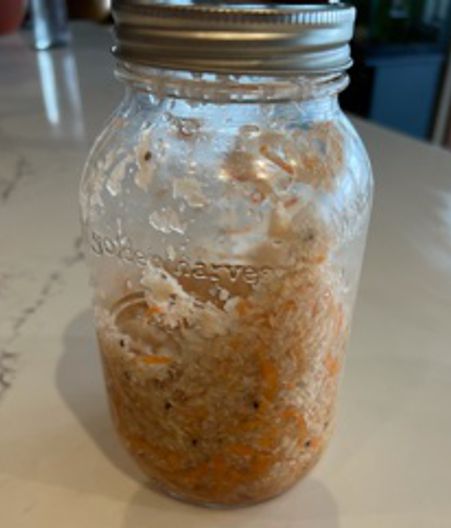
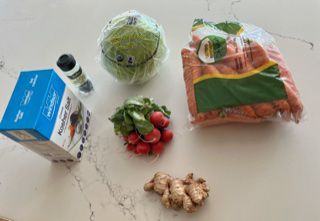
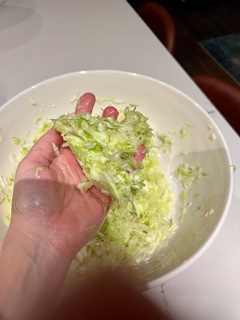
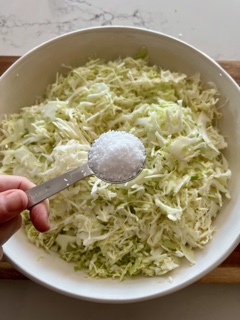
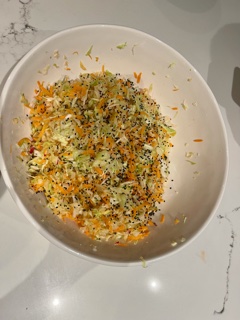
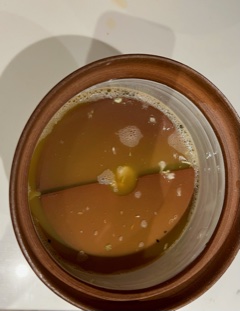
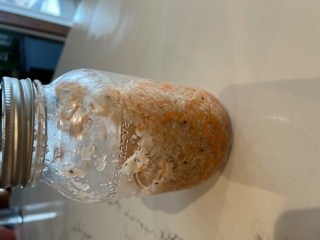
Articles:
- Castor Oil Medicinals
- Sauerkraut – the BEST probiotic
- Raw Honey, Lemon and Ginger Stacked & Shaken
- Are you using all the tools in your 'Health Box'?
- Chinese Medicine for Health and Wellness
- Kidneys are the Body's Furnace
- 10 Superfoods to Boost Your Immune System
- Clear Your Lungs with Chinese Medicine
- Welcome to Summer – the time of Joy and Yang Rising
- The Skinny on Fibre




